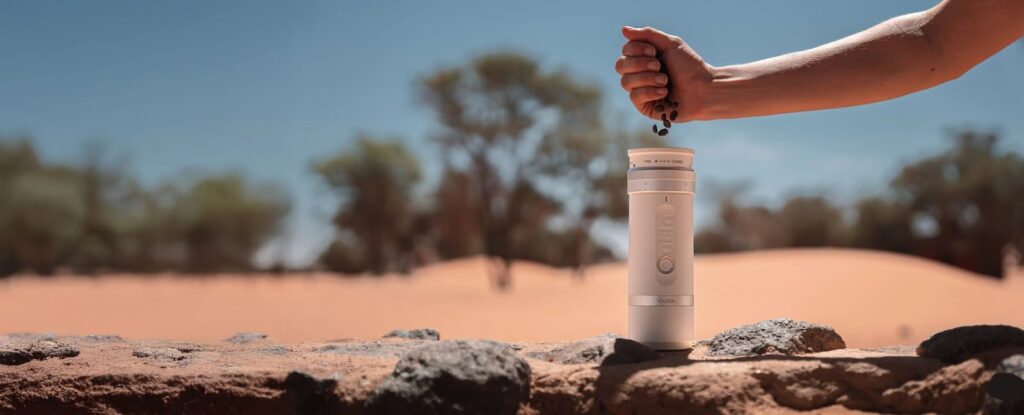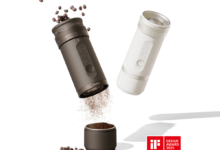
Adjusting Grind Settings: A Comprehensive Guide
The difference between a mediocre cup of coffee and an exceptional one often comes down to a single factor: grind size. Whether you’re brewing espresso, pour-over, or French press, adjusting your grinder settings correctly can transform your morning ritual from disappointing to delightful. Many coffee enthusiasts invest in quality beans and brewing equipment, yet overlook the crucial role that grind consistency and size play in extraction. Too fine, and your coffee becomes bitter and over-extracted; too coarse, and you’re left with a weak, sour brew that fails to capture the bean’s full potential. Understanding how to adjust grind settings isn’t just technical knowledge—it’s the key to unlocking flavors you never knew existed in your favorite coffee. This comprehensive guide will walk you through everything you need to know about grind settings, from the fundamental principles to practical adjustment techniques for different grinder types, empowering you to take control of your coffee’s flavor profile and brew with confidence every single time.
Table of Contents
Understanding the Basics of Coffee Grinding
What is Grind Setting?
Grind setting refers to the adjustable mechanism on your coffee grinder that controls the distance between the burrs or blades, ultimately determining how finely or coarsely your coffee beans are ground. Most grinders feature either a numbered dial, a stepped collar, or a stepless adjustment ring that allows you to move between settings. When you turn the adjustment mechanism toward finer settings, the grinding surfaces move closer together, producing smaller particles. Moving toward coarser settings increases the gap, resulting in larger, chunkier grounds. The grind setting directly impacts particle size distribution—the range of sizes from the finest powder to the largest chunks in your ground coffee. Even slight adjustments, sometimes just a single click or a few degrees of rotation, can significantly alter your coffee’s extraction. Understanding your grinder’s adjustment range is essential, as different grinder types offer varying levels of precision. Burr grinders typically provide more consistent results across their range, while blade grinders offer less control and produce uneven particle sizes regardless of grinding duration.
Importance of the Right Grind
Selecting the appropriate grind size is fundamental to proper coffee extraction, which is the process of dissolving soluble compounds from coffee grounds into water. When water contacts coffee, it extracts oils, acids, sugars, and other flavor compounds at different rates depending on particle size. Finer grinds expose more surface area to water, accelerating extraction and intensifying flavor—ideal for quick brewing methods like espresso where water passes through grounds in 25-30 seconds. Coarser grinds slow extraction, preventing over-extraction in longer brewing methods like French press or cold brew. Using the wrong grind size leads to extraction problems: too fine for your method results in bitter, astringent coffee as undesirable compounds dissolve; too coarse produces weak, sour coffee as water flows through too quickly, leaving desirable flavors locked inside. The right grind also affects brewing consistency and repeatability. When you dial in the correct setting for your beans, water temperature, and brewing method, you create a reproducible formula for excellent coffee every time. This precision transforms coffee making from guesswork into a reliable craft.
Types of Coffee Grinders
Manual Grinders
Manual grinders operate through hand-powered mechanisms, requiring you to physically turn a crank or handle to grind your beans. These grinders typically feature conical burrs housed in compact designs, making them portable and ideal for travel or small kitchens. The adjustment mechanism usually consists of a stepped or stepless ring located beneath the hopper or at the base of the grinder. To adjust, you’ll rotate this collar clockwise for finer grinds or counterclockwise for coarser settings, with many models offering numbered positions or click stops for reference. Manual grinders excel at producing consistent grinds for single servings, typically handling 15-30 grams of beans per session. They generate minimal heat during grinding, preserving delicate flavor compounds that might otherwise degrade. The grinding experience provides tactile feedback—you’ll feel increased resistance when grinding finer, helping you understand how adjustment affects the process. While manual grinders demand more physical effort and time, usually 1-2 minutes per dose, they offer precise control and quiet operation. They’re particularly suited for pour-over and French press brewing, though high-quality models can achieve espresso-fine grinds with patience and proper technique. For outdoor enthusiasts who want fresh coffee while camping or traveling, portable manual grinders from brands like OutIn offer the convenience of adjustable settings in compact, travel-ready designs.
Electric Grinders
Electric grinders automate the grinding process using motorized mechanisms, available in blade and burr configurations. Blade grinders use spinning blades similar to food processors, chopping beans rather than grinding them uniformly. They offer minimal grind control—you adjust coarseness only by grinding duration—and produce inconsistent particle sizes with excessive fines. Burr electric grinders, the preferred choice for quality-focused brewers, use either flat or conical burrs powered by motors. These grinders feature dedicated adjustment mechanisms: stepped grinders have preset positions marked by numbers or clicks, while stepless grinders allow infinite adjustment within their range. Adjustment typically involves rotating a collar, hopper, or dial while the grinder is running (for some models) or stopped (for others). Electric burr grinders handle larger quantities quickly, grinding enough for multiple cups in seconds. They maintain consistent particle distribution across their range, crucial for repeatable results. Higher-end models include features like timed dosing, programmable settings, and grind-by-weight capabilities. The main consideration is heat generation—extended grinding sessions can warm beans and affect flavor. Electric grinders suit all brewing methods when properly adjusted, from Turkish coffee to cold brew, making them versatile workhorses for daily coffee preparation.

Adjusting Grind Settings
Using a Manual Grinder
Adjusting a manual grinder begins with locating the adjustment mechanism, typically found as a threaded ring beneath the bean hopper or at the grinder’s base. Before making any changes, empty remaining beans from the hopper to prevent jamming during adjustment. For stepped grinders with click positions, rotate the adjustment collar counterclockwise to make the grind coarser or clockwise for finer settings, counting the clicks as you go. Each click usually represents a noticeable change in particle size. Stepless manual grinders require more precision—loosen a locking nut if present, then turn the adjustment mechanism in small increments, typically quarter-turns, tightening the lock nut once you’ve reached your desired position. After adjusting, grind a small amount of beans to purge old settings and verify the new grind size. Check the grounds visually and by feel, comparing them to reference images or your target consistency. Manual grinders respond immediately to adjustments since there’s no motor to compensate for resistance. If grinding becomes too difficult, you’ve gone too fine; if the crank spins with little resistance and produces chunky grounds, you’re too coarse. Make incremental changes rather than dramatic shifts, testing your coffee after each adjustment. Record successful settings by counting clicks or marking positions with tape, creating a personal reference system for different brewing methods and bean types.
Using an Electric Grinder
Electric grinder adjustment requires understanding whether your model is stepped or stepless and checking the manufacturer’s guidelines about adjusting while running versus stopped. For most burr grinders, start by removing beans from the hopper or grinding through remaining coffee to avoid waste and potential burr damage during adjustment. Stepped electric grinders feature numbered dials or collars with distinct positions—rotate toward lower numbers for finer grinds and higher numbers for coarser settings. Begin with the manufacturer’s recommended starting point for your brewing method, then adjust one or two steps at a time. Stepless grinders offer infinite adjustment within their range but require more careful calibration. Turn the adjustment ring or collar in tiny increments, sometimes just a few millimeters of rotation, as these small changes significantly impact grind size. After each adjustment, run the grinder briefly to clear grounds produced at the previous setting, ensuring your next dose reflects the new configuration. Some grinders require adjustment only when stopped to prevent burr damage, while others allow on-the-fly changes—consult your manual to avoid costly mistakes. Observe the ground coffee’s appearance and flow rate during dosing. Finer grinds will slow down the grinding process and create more resistance, sometimes producing a higher-pitched motor sound. Test your adjustment by brewing and tasting, then refine based on extraction results. Keep a log of settings for different beans and methods, noting both the numerical position and any qualitative observations about grind consistency and brewing performance.
Grind Adjustment Tools
Several tools can help you achieve and maintain optimal grind settings with greater precision. A grind size reference card displaying actual coffee grounds at various sizes provides visual comparison points, helping you quickly assess whether your current setting matches your target. These cards typically show everything from Turkish coffee powder to French press coarseness, offering immediate feedback without brewing. Digital calipers measure particle size distribution by sampling grounds, though this approach is more common in professional settings than home use. A simple kitchen sieve set with different mesh sizes lets you analyze your grind’s consistency by shaking grounds through progressively finer screens, revealing the percentage of fines versus larger particles. For espresso dialing, a shot timer and scale become essential adjustment tools—they help you track extraction time and yield, indicating whether you need finer grinds to slow flow rate or coarser grinds to speed it up. Some coffee enthusiasts use smartphone apps that photograph grounds and estimate particle size through image analysis, though these remain less reliable than visual comparison or brewing tests. A notebook or digital log serves as perhaps the most valuable tool, recording grind settings alongside brewing parameters, bean information, and taste notes. This documentation transforms random adjustments into systematic refinement, helping you identify patterns and quickly return to successful settings. Clean brushes and grinder cleaning tablets also function as adjustment tools indirectly—they maintain burr sharpness and remove coffee oil buildup that can affect grind consistency, ensuring your adjustments produce their intended results.
Mastering Your Grind for Perfect Coffee
Mastering grind adjustment is a journey that transforms your relationship with coffee, turning each brew into an opportunity for refinement rather than a routine task. The principles covered in this guide—understanding how grind size affects extraction, recognizing the differences between grinder types, and applying systematic adjustment techniques—provide the foundation for consistently excellent coffee. Remember that perfecting your grind settings isn’t about finding one magic number and stopping there. Variables like bean origin, roast date, humidity, and even seasonal changes require ongoing attention and minor tweaks to maintain optimal results. Start with the recommended settings for your brewing method, make small incremental adjustments, and taste the results with intention. Keep notes on what works, trust your palate, and don’t be afraid to experiment outside conventional guidelines. The tactile experience of adjusting your grinder, observing how grounds change, and tasting the impact of those changes develops an intuitive understanding that no chart or formula can replace. With patience and practice, adjusting grind settings becomes second nature, empowering you to extract the full potential from every bean and brew coffee that truly reflects your personal taste preferences.








